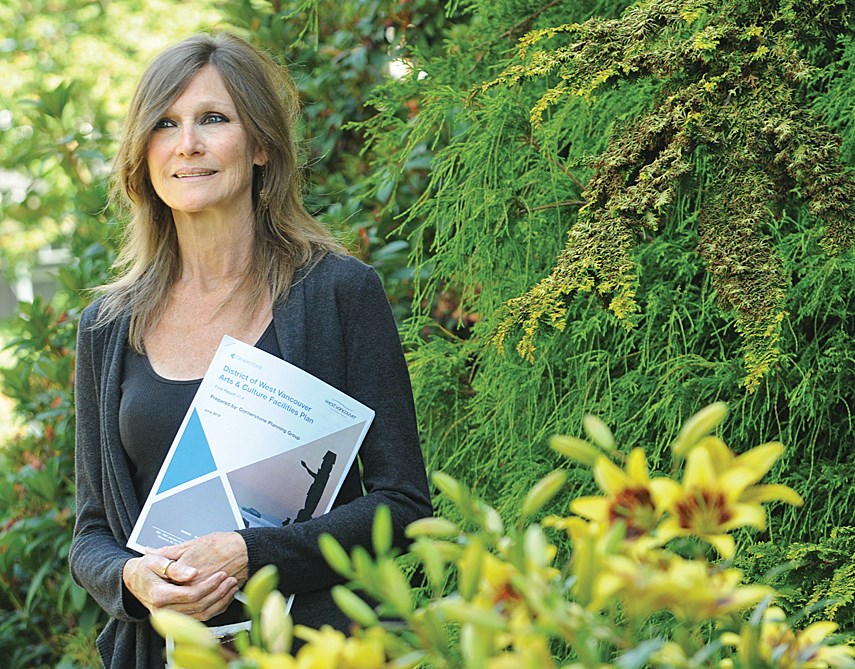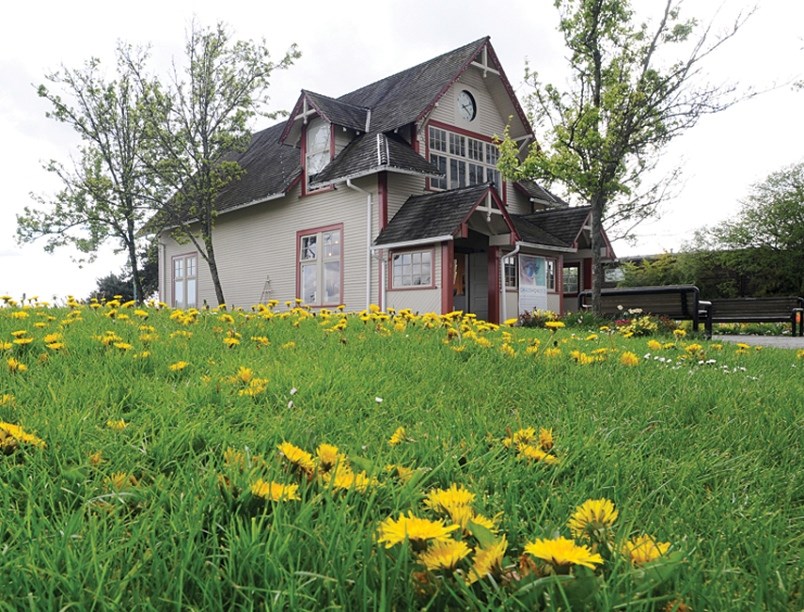They say that art has no limits, though for a long time members of West Vancouver’s creative community have felt limited by the scope of arts facilities in the municipality. But that appears to be changing.
While first noting last week’s 100th birthday milestone of peerless local artist Gordon Smith, council endorsed an arts and culture facilities plan during Monday’s meeting that will guide the municipality as it looks at building new arts spaces – and possibly re-examines some spaces that are falling short of serving the growing community.
Following council’s unanimous decision, staff now have six months to report back with potential site locations and a feasibility analysis for two arts facility development options.
The first option, according to a presentation made by the arts facilities advisory committee, is to build two new arts facilities, which would include an approximately 12,000-square-foot art museum and 13,000-square-foot community arts centre, replete with office space and storage for various local community arts organizations. The second option would be to construct one 21,000-square-foot combined arts and culture centre which would also house an art museum.
While funding strategies still need to be ironed out, a rough estimate suggests the price tag for the two-building option could be up to $27 million. The one-building option could top out at $23 million.
In order for West Vancouver’s existing arts programming to grow and flourish, immediate action is required, according to Jennifer Webb, co-chair of the arts facilities advisory committee.
“Many district-owned facilities are inadequate for the excellent programming now taking place and severely limit the potential for future growth,” said Webb.
Following a six-month study, it was determined that West Vancouver provides approximately 22,500 hours of arts and culture programming annually across eight district-owned facilities, including the art museum, Silk Purse, Music Box, Ferry Building, Gleneagles and West Vancouver community centres, the seniors’ activity centre and library. (The municipality’s major performance venue, Kay Meek Centre, is not district owned; rather, it’s on school property and operated under a joint use agreement between the school district and the West Vancouver Arts Centre Trust.)

Four facilities in particular – the art museum, Ferry Building, Music Box, and Silk Purse – received poor rankings when it came to facility condition and were deemed to be inappropriate spaces for their current programming, according to the report.
Simon Drake, treasurer of Theatre West Van, noted that a lack of storage options and difficulty accessing rehearsal and performance spaces have been major issues for many community arts groups.
“We spend $6,000 per year to rent 500-square feet of garage space outside of West Vancouver,” he said, adding that increased arts grants could help groups pay for performance space rentals, among other necessities, at the new arts facilities or elsewhere.
With demand for arts programming expected to balloon in West Vancouver over the next 10 years and beyond, the arts and culture facilities plan final report recommends developing new grants so that arts groups can offset the financial burdens of renting administrative space, storage, and rehearsal and performance spaces. The report also recommends the district develop an online database which would highlight art spaces available for rent in the community.
While the report calls on the district to assess and perform a number of small-scale improvements on some municipally-owned arts facilities, it notes that the programming at Silk Purse, Music Box and the art museum should be relocated to the new arts facility, or facilities, once built. However, the report recommends continuing to operate the Ferry Building Gallery as an emerging art exhibition space.
When it comes to the district’s derelict Klee Wyck arts facility, a subcommittee will be formed to study and determine the space’s future uses. Whether that’s as a public art space, artist studio space or recreation area, the report recommends the facility should not be used for activities that attract large volumes of people due to its location in a residential neighbourhood and its proximity to the Capilano River. The subcommittee has until Dec. 1 to bring forward its suggestions to council.
Coun. Nora Gambioli implored those from the arts community in attendance to celebrate the approval of the final report and council’s decision to move forward with the new arts facilities, but warned of potential challenges ahead.
“I suspect though that this is going to get more and more difficult as the locations become more and more clear and the amount of money we need to raise is going to become more and more clear,” said Gambioli. “What we will get next time when specific locations start to be named is we will start to get everyone who is living near those specific locations coming out with concerns.”
Mayor Mary Ann-Booth called the approval of the report a “critical milestone for council,” citing the tireless efforts of many in the creative community who have pushed for more robust arts facilities over the decades.
“This is something that I think the community supports. It goes towards the vision of council for a more livable, vibrant and inclusive community.”
West Vancouver artist Pierre Coupey, one of many in the local arts scene who voiced their support during Monday’s meeting, talked about the need for renewal and replacement when it comes to local arts spaces.
“We’ve been studying this for more than 23 years, haven’t we? We’ve been probing and searching and reporting; now it’s time to start building and creating and supporting,” said Coupey.
Building new arts facilities and refurbishing some existing district-owned spaces is necessary in order to give staff at those facilities the tools they need to “really make our heart soar,” according to Coupey.
“Ultimately, maybe that’s what art does – it gives us some juice and gives the community some vitality.”



